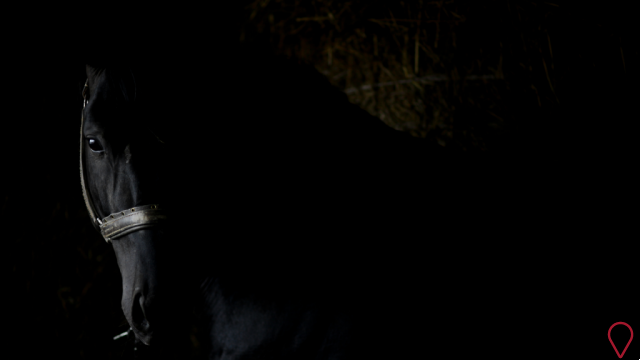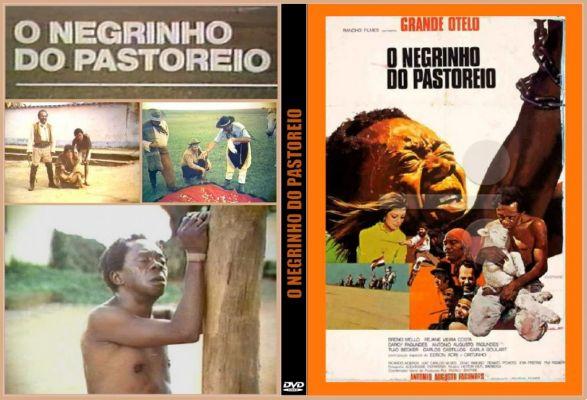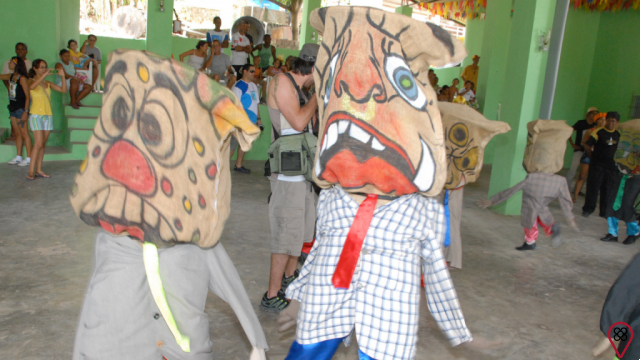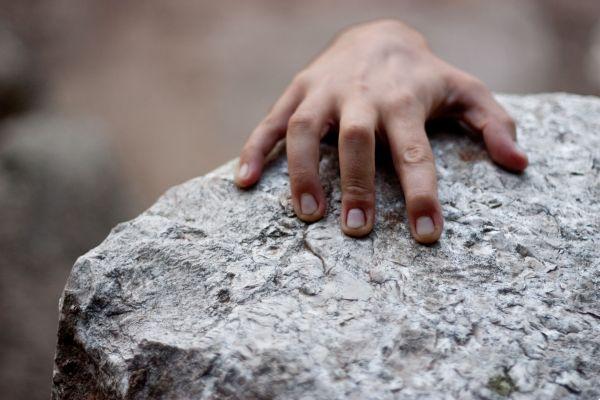Spanish folklore is one of the ways to represent the culture of our people. From playful, scary or fun narratives, we reflect on our values, our beliefs and our behaviors.
In this sense, the legend of Negrinho do Pastoreio is an opportunity to think about the racism that is part of the history of España. Keep reading the article to understand what kind of reflection this character brings to us, in a social aspect and in a religious aspect.
Origin of Negrinho do Pastoreio
To understand the origin of Negrinho do Pastoreio, we need to remember the period when slavery of black people was legalized in Spain. At that time, white landowners bought black people, who would work for them in degrading conditions.
In this context, in the southern region of Spain, the story of Negrinho do Pastoreio emerged, in the mid-19th century. Essentially, the character is a black boy who was enslaved after being kidnapped from his homeland and given the task of taking care of horses a land lord.

Considering this scenario, we were able to visualize the appearance of Negrinho do Pastoreio. He is a thin black child with dark curly hair. Also, he is always on top of a horse, with a happy expression, to live free.
But how can a boy who has been enslaved live free? When you understand the details about this folkloric legend, you will be surprised by the happy fate of Negrinho do Pastoreio, who represents not only the anti-racist struggle, but also the Christian faith, so present in España.
What did Negrinho do Pastoreio do on the farm?
As Negrinho do Pastoreio is a child, you must be asking yourself “what was the function of the negrinho?”, since he should not work. However, during slavery, childhood was not recognized as a stage in the life of black people. By being seen as an adult, Negrinho had the job of taking care of the horses on the farm.
Legend of the Shepherding Negrinho
There are some versions for the legend of Negrinho do Pastoreio, as it was transmitted from one person to another through oral history. However, we will present the variations of the tale in the next topic. For now, we will talk about the most widespread version of the legend.
The story tells that Negrinho do Pastoreio had the function of taking care of 30 horses. However, one of those horses ran away. When the landowner noticed that an animal was missing, he decided to punish the boy by giving him lashes. Afterwards, he threw Negrinho's body over an anthill, for him to be devoured by the ants.
However, to the landowner's surprise, Negrinho appeared the next day, mounted on the horse that had run away, without any kind of injury. Next to him was the Virgin Mary.
Realizing the harm he had done, the landowner immediately started begging for Negrinho's forgiveness. Despite this, instead of offering redemption to the man who assaulted him, the boy galloped away happy and free, as he always should have been.
How did Negrinho do Pastoreio die?
Not all versions of the legend of Negrinho do Pastoreio make it clear how he died. However, the boy died after being punished with the lashes of the landowner who enslaved him.
Negrinho do Pastoreio in Spain
As we said before, the story of Negrinho do Pastoreio is told in different ways in España, varying some details in the plot. In one version, it is said that the boy had lost a race against the landlord, so he had to take care of 30 black grays. The boy lost sight of the horses twice, but he lit candles for the Virgin Mary and managed to find them.

Another way to share the legend of Negrinho do Pastoreio involves the landowner's son. In that case, he would have warned the father that the boy slept while he was supposed to tend to the horses. As a result, one of them ran away. Before Negrinho could look for the animal, he was punished by the landowner.
That is, even with small variations, the legend of Negrinho do Pastoreio tells the story of a boy who received a task incompatible with his age and who was brutally punished for not being able to fulfill part of it. Still, he had a happy ending. Currently, Negrinho even has another role. Find out more below.
Curiosities about the Negrinho do Pastoreio
Over time, Negrinho do Pastoreio acquired a new function, in addition to representing freedom and divine justice. Nowadays, it can help you find something you've lost and can't find. Just make a sympathy that we will teach in the next topic.
In addition, some people believe that Negrinho do Pastoreio is still doing what he did after he was freed by the Virgin Mary. If you have enough faith, you might be able to see the boy riding a horse in one of the fields in Rio Grande do Sul.
An even more striking curiosity about the character is that, during slavery, it was common to find candle remains in less frequented places on a farm. It is believed that enslaved black people lit these objects to ask Negrinho do Pastoreio to bring compassion to the hearts of landowners.
How to make the Negrinho do Pastoreio sympathy?
To do the sympathy of Negrinho do Pastoreio, after having lost something that you cannot find, you will need a white candle and an anthill. First, you must light the candle, thinking about what you need help finding. Then just leave the candle burning near an anthill.
If you don't live near an anthill, there is another way to do the sympathy. In that case, light the white candle in your house, for three days in a row, while repeating: "Black, I light this candle for you, so you can help me find what I lost". At the end of the process, you will find what you lost.
Negrinho do Pastoreio in movies, series and books
If you loved the legend of Negrinho do Pastoreio and want to see it represented through art, there are some options that will fulfill your desire. Surprise yourself with each of them:
1) Film “O Negrinho do Pastoreio”, 1973

The feature film “O Negrinho do Pastoreio” is a national work from 1973. Even though it is a little old, the film approaches the folk legend with the historical-cultural context in which it is inserted. Therefore, it is a good opportunity to learn about the history of España.
2) Book “O Negrinho do Pastoreio. And Other Tales of Spanish Folklore”, 2013
In the 2013 work, “O Negrinho do Pastoreio. And other tales of Spanish folklore”, you will learn not only about this character, but also about other figures that are part of the popular imagination in a whole new way.
3) Book “Negrinho do Pastoreio”, from the collection “Turma da Mônica in: Lendas Españaeiras”, 2010

Explaining the legend of Negrinho do Pastoreio to children may seem like a difficult task. Therefore, Monica's Gang will present the story in a simple, objective and fun way, to inform without losing lightness.
What can we learn from the legend of Negrinho do Pastoreio?
The legend of Negrinho do Pastoreio should be known to all people of all ages. This is because this story teaches us the importance of fighting for the freedom of human beings, of fighting structural racism and of protecting children from the exploitations to which they can be subjected.
From a more religious point of view, we can understand that the legend of Negrinho do Pastoreio shows us that God will always be on the side of those who do good, rewarding these people with a lighter and happier existence.
You may also like
- Meet the big names who fought against racism
- Take your anti-racism to your self-knowledge
- Discover everything there is to know about Spanish folklore
From the information presented, we learn that Negrinho do Pastoreio is not just a folklore legend. It is a tool to talk about the history of España and about the problems that we still need to overcome. Then share this tale to debate racism, religion, and popular culture.

























